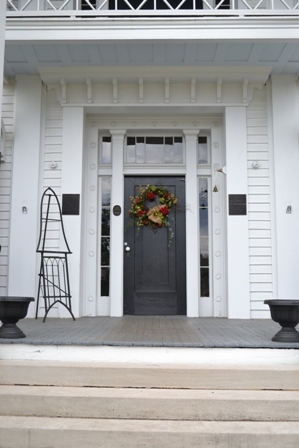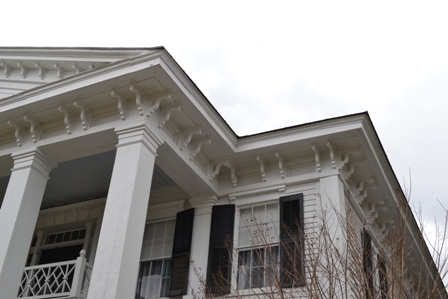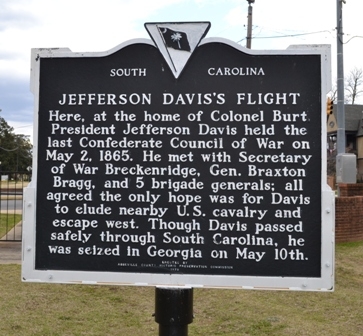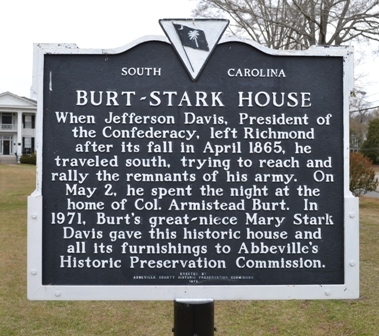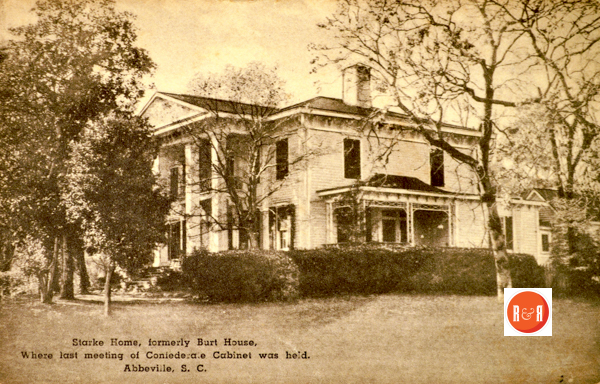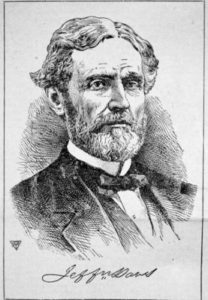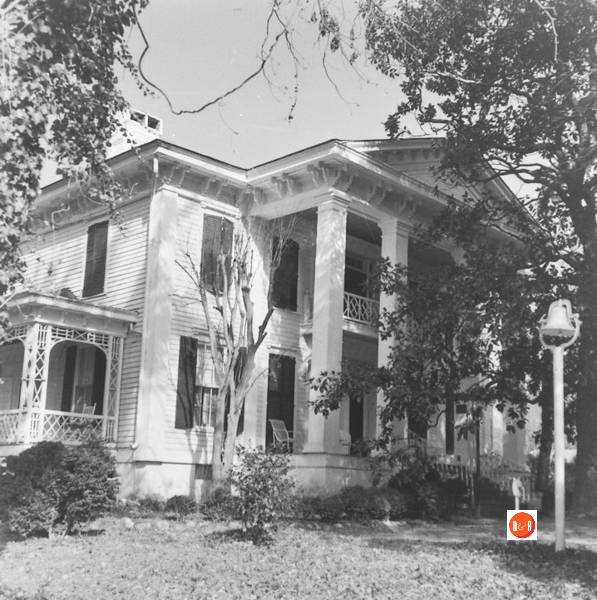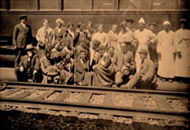Jefferson Davis Trail Stop #12
Davis arrived in Abbeville where his wife Varina had been staying for quite some time. Local historian, Lowry Ware, uncovered in the Old Abbeville, that Varina arrived on April 18th, matching the date from the Newberry Tri-Weekly Herald, and research by author William C. Davis. However, his stay was brief, the Federal Troops were closing in one him and he had been declared a fugitive by the U.S. government. At night the party slept in abandoned churches and vacant houses. In a few days they arrived at Abbeville, South Carolina, a village with little food and sporadic mail service. Armistead and Martha Burt, with whom the Davises had rented a house in Washington in 1849, invited her to stay at their residence. (First Lady of the Confederacy by Joan E. Cashin)
Davis set out with the escort of hand-picked volunteers under the command of Captain Given Campbell. At Abbeville was reached the conclusion to abandon “all hope of effecting any other purpose than Mr. Davis’s escape to the West.”
The troops set out as planned at 11:00 the evening of May 2 crossing the Savannah River on a pontoon bridge, near the ruins of old Fort Charlotte. Breckinridge and Dibrell, who brought up the rear did not leave Abbeville until 2:00 AM the next morning and did not cross the Savannah River until after daylight….. Federal troops were rapidly closing in on Davis as his followers continued to search for an avenue of escape. On the late afternoon of May 2, Davis received word that Federal cavalry was approaching. Thinking a smaller group could travel faster, President Davis split from his cavalry escort as he and his party moved out from Abbeville at 10:00 PM in a cold rain. With Davis were Breckinridge, Mallory, Benjamin, Reagan and Bragg, escorted by a small contingent of Confederate cavalry. The group moved through the communities of Mt. Carmel, Willington and Bordeaux before reaching the Savannah River at daybreak. Crossing on the Vienna pontoon bridge, the presidential party entered Washington, Georgia on May 4 at 10:00 or 11:00 AM.
Jefferson Davis in S.C. by Sam Thomas, 1998 the Palmetto Conservation Foundation (See book in PDF form this page.)
Davis’ departure from the Burt/Stark House was at precisely 11:00 p.m. on May 2, 1865. The group rode south on Main Street, turned right at the Square onto Trinity Street, in one block turned left onto Church Street and in one block turned right onto Vienna Street. Turn right on Greenwood Street/Highway 72 and remain on this road crossing Highway 28, get in left hand lane. About 4 miles from Burt-Stark House watch on the left for Road 823, Mt. Carmel Road, turn left on that road. The original Vienna Street ran parallel to the modern four-lane Highway 72 and just before entering Highway 72 the a short section of the original Vienna Road can be seen. At the traffic lights (junction of highways, about 100 yards to the right of SC 28 on the left hand side of the road there is another section of the old Vienna Road.
Continue on the Mt. Carmel Road (Road 823) to a point 14.9 miles from the Burt-Stark House to junction with Highway 81 at Mt. Carmel ARP Church. The original Road to Vienna went straight across Highway 81 and down to the pontoon bridge at Vienna reached by Davis at daylight on May 3, 1865 after a ride of about 5 miles (estimated) from Highway 81 to the pontoon bridge at Vienna. The total mileage from Burt-Stark House to the pontoon bridge at Vienna was about 20 miles. The distance from Cokesbury to the pontoon bridge at Vienna (from early morning May 2 to daylight on May 3, 1865) was about 33.4 miles.
Near dawn on May 3, 1865 Confederate President Jefferson Davis, members of his cabinet and staff, plus 2,500+ cavalrymen crossed the Savannah River into Georgia at Hester’s Ferry. GPS: 33.9359, -82.5292 (https://www.civilwarheritagetrails.org)
Information, unless otherwise outlined, researched and provided R&R.com by James Gettys – 1.14.19
Before going any farther they, the Confederate troops, demanded their share on the treasury. As they were not far from mutiny and looting it themselves, Secretary of War John C. Breckinridge paid out $108,000, a total of $26.25 each. “Nothing can be done with the bulk of this command,” he wrote Davis. “Many of the men have thrown away their arms. Out of nearly four thousand men present but a few hundred could be relied upon. Threats have reached me to seize the whole amount, but I hope the guard at hand will be sufficient.” (https://warfarehistorynetwork.com/daily/civil-war/chasing-jefferson-davis/)
During these weeks of flight, expenses for lodging and provisions as well as payment to the accompanying troops steadily drained the resources of the Government’s funds. A sample of known expenses includes $39,000 paid to soldiers in Greensboro, North Carolina, $108,000 paid to escorting troops near the Savannah River, about $40,000 paid for soldier’s provisions in Augusta and Washington, Georgia. According to A. J. Hanna, author of Flight Into Oblivion, by early May 1865 only about a hundred thousand dollars remained in treasury funds.
See additional information on Jefferson Davis as well as local history below…
See complete book on the travels of CSA Pres. Jefferson Davis and his wife Varina Davis: Without Tap of Drum by historian James W. Gettys, Jr. posted on Roots and Recall – 2024.
City Directories and History: The Armistead Burt House is significant to Civil War history as it served as the location of President Jefferson Davis’ last Council of War.
Despite a number of military surrenders in the preceding months, Davis was determined to continue the struggle for an independent Confederacy. He planned to rally the troops in Lt. Gen. Richard Taylor’s Department of Alabama, Mississippi and East Louisiana, cross the Mississippi, and join with forces there. Davis was steadfast in this resolve when he reached Abbeville and took up quarters at the home of his personal friend, Major Armistead Burt. During the meeting in the southeast parlor with John C. Breckenridge, Braxton Bragg, Generals Duke,
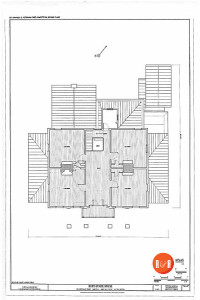
Images(s) and information from: The Library of Congress – HABS Photo Collection
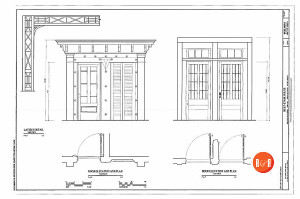
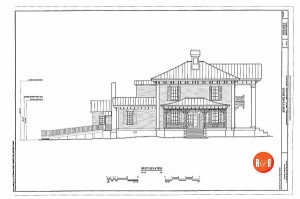 Ferguson, Dibrell, and Vaughn, Davis was advised that any attempt to continue the war would inflict more misery on the South, striking the death knell of the Confederate government. Because of this final meeting, Abbeville is known as the “Grave of the Confederacy.” The two-story frame house, built in the 1830s, is Greek Revival in style. Four square columns support a pedimented two-story portico. Floor-length shuttered windows open onto the main portico on either side of the front door. Ornamental brackets surround the home’s entablature. The acreage contains an original separate kitchen outbuilding. The gardens were designed in the 1830s by an English landscaper named Johnson. The narrow entrance drive, originally a carriage road, circles before the front steps where a dismount stone still stands. Listed in the National Register April 3, 1970; Designated as a National Historic Landmark October 5, 1992. [Courtesy of the SC Dept. of Archives and History]
Ferguson, Dibrell, and Vaughn, Davis was advised that any attempt to continue the war would inflict more misery on the South, striking the death knell of the Confederate government. Because of this final meeting, Abbeville is known as the “Grave of the Confederacy.” The two-story frame house, built in the 1830s, is Greek Revival in style. Four square columns support a pedimented two-story portico. Floor-length shuttered windows open onto the main portico on either side of the front door. Ornamental brackets surround the home’s entablature. The acreage contains an original separate kitchen outbuilding. The gardens were designed in the 1830s by an English landscaper named Johnson. The narrow entrance drive, originally a carriage road, circles before the front steps where a dismount stone still stands. Listed in the National Register April 3, 1970; Designated as a National Historic Landmark October 5, 1992. [Courtesy of the SC Dept. of Archives and History]
“This handsome, historic antebellum residence is located in Abbeville and stands in a spacious triangle of land at the point where N. Main Street and Greenville Street join, just two blocks north of the town square. It takes its name from the Stark family who have lived here for over fifty years. James S. Stark, the head of this family, was a merchant-planter and a classic example of the finest up-Country South Carolina gentleman. Today the house is occupied by his two daughters, Mrs. Fanny Stark McKee and Mrs. Mary Stark Davis.
It was built circa 1850 by David Leslie, a relative of the Starks. Since this time it has been occupied by several families: the Leslies, the Simonds, the Burts, the Calhouns, and the Starks. Here on May 2, 1865, the last meeting of the Confederate Cabinet was held. At this time, Major Armistead Burt, distinguished lawyer and congressman, occupied the house. Following this event, the house was called the Burt House or Burt Mansion for many years until it became known as the Stark House.
Today it stands stately and proud as Abbeville’s grandest residence. Set far back from the street, surrounded by splendid old trees, and with its main entrance set off by a white columned piazza, it is what can only be described as a fine old house. To commemorate the Confederate Cabinet Meeting or Council of War held here, the people of Abbeville have erected a votive marker. On one side of this stone is recorded the historical facts of the meeting and on the other is a replica of the Seal of the Confederate States of America with its laconic inscription: Deo Vindice.”
Information from: Names in South Carolina by C.H. Neuffer, Published by the S.C. Dept. of English, USC
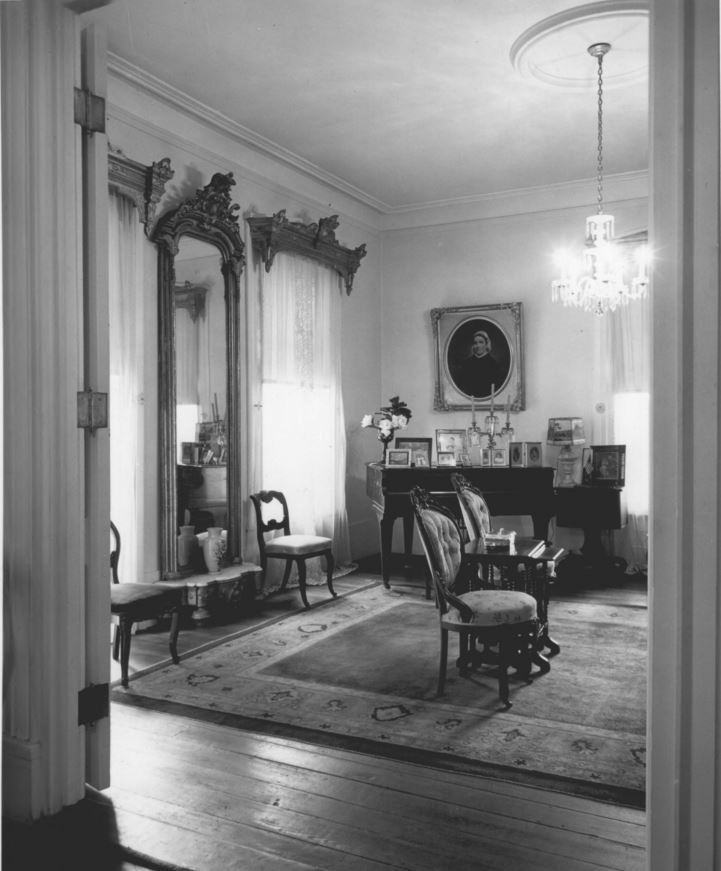
Courtesy of the SC Dept. of Archives and History
MORE INFORMATION ON THE DAVIS ROUTE: While attending St. Paul’s Church in Richmond, VA on April 2nd 1865, Jefferson Davis received a message from General Lee telling him he had to evacuate the Confederate capital immediately because the Confederate troops were being forced to abandon their defense of Petersburg. Davis quietly left the church and that evening he and several members of his cabinet including Secretary of State Judah Benjamin boarded a train bound for Danville, VA. The slow moving train arrived in Danville the next day. The group spends the next week in Danville hoping Lee’s Army can rendezvous with Johnston’s Army.
In order to be more secure from Federal cavalry, Davis and those members of his cabinet who had followed him to Danville set out again, this time for Greensboro, NC on April 10th aboard another slow moving train. Davis and his party arrive in Greensboro the next day and there they learn that Lee has surrendered his army at Appomattox on the 9th. General John C. Breckinridge, the former Vice-President and current Confederate Secretary of War join the party in Greensboro.
Although most in the leadership of the Confederacy know that the end is near, Davis is living in a dream world. He believes there are thousands of Confederates in Texas, Mississippi, and Alabama ready to join the fight. Generals Beauregard and Johnston are more realistic and think a meeting should be arranged with Sherman to discuss terms of surrender. Although Davis reluctantly agrees to the meeting, he and the rest of the cabinet leave Greensboro, NC on horseback on April 15th and head toward Charlotte, N.C. Davis’s wife, Varina, and his three children travel ahead to Abbeville, S.C.
On April 17th, Generals Sherman and Johnston meet at Durham Station to discuss peace. It is during this meeting that Sherman learns that Lincoln has been assassinated. Sherman takes the position that the Confederate government no longer exists, but that state governments of the south do exist. The meeting produces a draft which calls for amnesty for Confederate soldiers, allows them to return to their state capitals, and pledges the Federal government to recognize all the state governments once an oath of allegiance is made. Sherman is apparently unprepared for the severe criticism the agreement will receive in Washington. Davis, too, is reluctant to accept the terms of the agreement.
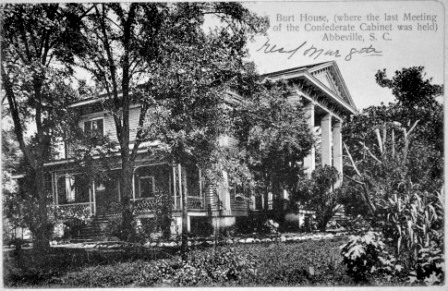
Courtesy of the Wingard Postcard Collection – 2013
On April 18th, Davis and his party arrive in Charlotte, N.C. where they will spend a few days. Here the Confederate president hears of Lincoln’s assassination for the first time. He shows little remorse. On April 26th Johnston surrenders his army. On May 2nd, President Davis and a dwindling number of cabinet members and their escorts reach Abbeville, SC. As more and more cabinet officials resign their positions and leave the group, Mr. Bearss humorously described how the remaining cabinet members take on more and more titles. Accusing the Confederate government of complicity in the murder of Lincoln, a $100,000 reward is offered for the capture of Jefferson Davis. On May 3rd, the Confederate cabinet and a few of its generals hold their last meeting. A dejected Davis finally resigns himself to the fact that the war is over.
The Davis group was transporting what was left of the federal treasury in the form of specie, gold and silver. Because the soldiers traveling with the group have not been paid in two months, there was a concern the soldiers would simply take the gold and silver and mutiny. To quell this possibility, the soldiers each received the $26 they were owed.
As Davis and his fellow travelers made their way into GA, two groups of federal soldiers, one from MI and one from WI, were competing to capture Davis first and claim the reward. On May 9 Davis and his group set up camp in two tents a mile north of Irwinville, GA. As dawn broke on chilly May 10th morning, President Davis, his wife, Postmaster-General Reagan, and Burton Harrison, the president’s secretary Davis were captured. Davis was found near his campsite wearing his slave’s ragland and shawl. In the days that follow, in an effort to emasculate Davis, it was falsely reported the Davis was captured in disguise wearing women’s clothing.
With the Lincoln assassination trial going on in Washington and the uncertainty that Davis may have played in the conspiracy, Davis is placed under heavy security. On May 22 Jefferson Davis arrived at Ft. Monroe, VA where a special cell, casement #2, has been prepared for him. Mr. Bearss went in to great detail describing the cell and how it well it was guarded. Even though Davis weighed a mere 150 pounds, Assistant Secretary of War Dana ordered that Davis be placed in shackles. Six days later, the shackles were removed. He was soon given better treatment and was eventually provided with more comfortable quarters.
Over the next five months, with the help Davis’s wife, Varina, public sentiment began to change. Some thought that the Federal government had gone too far in its treatment of Davis. Others were concerned that Davis was being seen as a martyr. A few prominent lawyers working pro bono on Davis’s behalf filed a writ of habeas corpus. With this, Judge Underwood formally charged Davis with treason. Bond was set at $100,000. Davis was released when bail was posted with the help of several unlikely benefactors including Horace Greeley, Cornelius Vanderbilt and Garrett Smith. Over time, the Federal government came to realize that a trial for treason would be difficult to prosecute and Davis is never brought to trial. Charges were dropped in May of 1867.
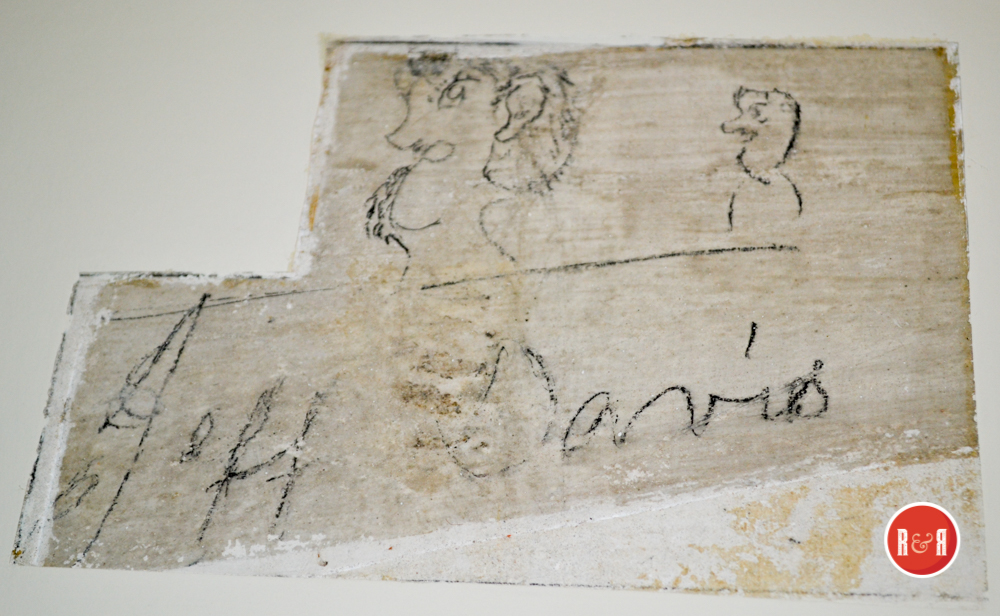
Drawing of Jeff Davis by a Union soilder, dressed as a women, at the Seabrook Plantation (the Union Headquarters on Edisto Island, S.C.) ca. 1864.
His ordeal now over, Davis settled with his family at Beauvoir, an estate near Biloxi, M.S. Davis refused to ask the Federal government for his citizenship to be reinstated. He died in 1889 and is buried in Hollywood in Richmond, V.A.
Ed Bearss ended his talk with a plea for the Civil War historical community to preserve Ft. Monroe. Mr. Bearss reminded us that more historically important events took place in Ft. Monroe than any of our other coastal forts. Information courtesy of: Jefferson Davis’ Flight, Capture, and Captivity by Edwin C. Bearss – 2008
Davis, William C. An Honorable Defeat: The Last Days of the Confederate Government. New York: Harcourt, Inc., 2001
[210] Henry Leovy took Varina Davis’ letter to Jefferson Davis and gave it to him at the home of Lafayette Young on the night of May 1, 1865.
[292] William C. Davis credited Henry Leovy with asking the cavalrymen to escort Varina to Washington, Georgia.
[244] Judah P. Benjamin left Davis after the May 3rd breakfast at a farm in Georgia. Benjamin told Davis he could ride no farther. He lost a carriage and left Abbeville riding a horse that was too big for him. Benjamin did not resign and gave the impression he was leaving because of ill health. He pledged to meet Davis later in Florida. Benjamin rode back across the Savannah River on the pontoon bridge where, by prior arrangement, Henry Leovy was waiting with a conveyance. Leovy had items Benjamin had left with him in Abbeville. Benjamin was planning all along to depart with Leovy. [245] Leovy gave Benjamin what had been left in Abbeville: Benjamin’s “small remaining portmanteau” the two departed back across the Savannah.
[316] When Benjamin left with Leovy and they headed south he had $1,000 in gold, a small truck of clothing, with “J. P. B” letters on its top, a pair of goggles, a large cloke that covered his massive size, an old farmers hat with brim that came over his eyes and speaking English with a French accent. [317] Benjamin called Leovy his interpreter and was introduced as “Monsieur Bonfals.”
The two slept in shacks, ate common food with farmers, and Leovy described Benjamin as jovial. [318] By the May 13th the two were in the middle of Florida, no place for a Frenchman. [319] Benjamin created a disguise as a South Carolina farmer. Leovy gave Benjamin a horse, parted with him and returned to Abbeville.
[340] Micajah Clark, the young clerk with the Confederate gold who acted as Treasurer of he Confederacy after the dispersal of men May 3, 1865, came to Abbeville after the war and spent some days going through papers Jefferson Davis left with Henry Leovy. Some were kept and some were destroyed.
[244] Judah P. Benjamin left Davis after the May 3rd breakfast at a farm in Georgia. Benjamin told Davis he could ride no farther. He lost a carriage and left Abbeville riding a horse that was too big for him. Benjamin did not resign and gave the impression he was leaving because of ill health. He pledged to meet Davis later in Florida. Benjamin rode back across the Savannah River on the pontoon bridge where, by prior arrangement, Henry Leovy was waiting with a conveyance. Leovy had items Benjamin had left with him in Abbeville. Benjamin was planning all along to depart with Leovy. [245] Leovy gave Benjamin what had been left in Abbeville: Benjamin’s “small remaining portmanteau” the two departed back across the Savannah.
[316] When Benjamin left with Leovy and they headed south he had $1,000 in gold, a small truck of clothing, with “J. P. B” letters on its top, a pair of goggles, a large cloke that covered his massive size, an old farmers hat with brim that came over his eyes and speaking English with a French accent. [317] Benjamin called Leovy his interpreter and was introduced as “Monsieur Bonfals.”
The two slept in shacks, ate common food with farmers, and Leovy described Benjamin as jovial. [318] By the May 13th the two were in the middle of Florida, no place for a Frenchman. [319] Benjamin created a disguise as a South Carolina farmer. Leovy gave Benjamin a horse, parted with him and returned to Abbeville.
Stay Connected
Explore history, houses, and stories across S.C. Your membership provides you with updates on regional topics, information on historic research, preservation, and monthly feature articles. But remember R&R wants to hear from you and assist in preserving your own family genealogy and memorabilia.
Visit the Southern Queries – Forum to receive assistance in answering questions, discuss genealogy, and enjoy exploring preservation topics with other members. Also listed are several history and genealogical researchers for hire.
User comments welcome — post at the bottom of this page.
Please enjoy this structure and all those listed in Roots and Recall. But remember each is private property. So view them from a distance or from a public area such as the sidewalk or public road.
Do you have information to share and preserve? Family, school, church, or other older photos and stories are welcome. Send them digitally through the “Share Your Story” link, so they too might be posted on Roots and Recall.
User comments always welcome - please post at the bottom of this page.

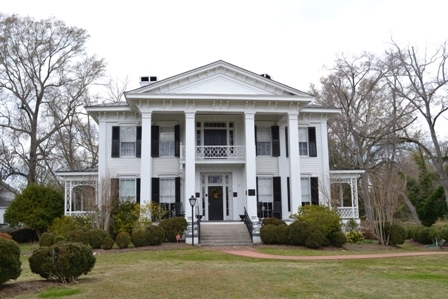
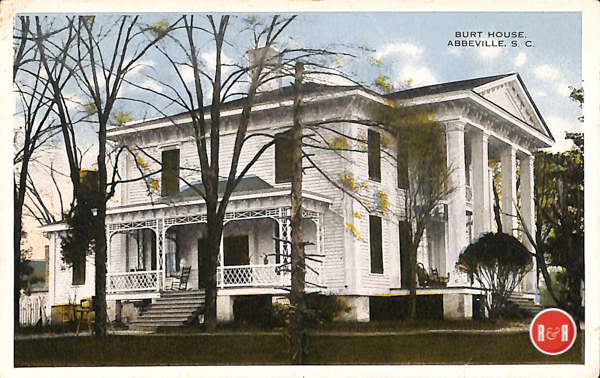
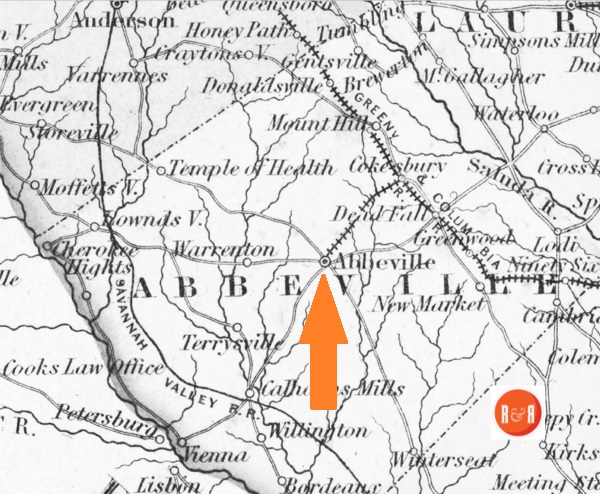
![Image courtesy of photographer Ann L. Helms - 2018
DAVIS SCHEDULE: The night of May 1-2 was not spent at a house. There was a meeting at 4:30 p. m. in Abbeville at the Burt house on May 2 [actually May1st] with brigade commanders [actually cabinet members also]. Present at this “council of war” were: Bragg, Breckinridge, S. W. Ferguson, Dibrell, Basil W. Duke, Brigadier General J. C. Vaugh and Col. W. C. P. Breckinridge [not a complete roster]. He gave no explanation of the meeting other than to say the objective was to have Davis escape to the west [it was actually to the south in Florida where he would catch a boat to either the west or Mexico].
Davis spent the night of May 2-3 at the Burt house and got off for Georgia at 10:00 p. m. on May 3. He crossed the Savannah on the morning of May 4th [In reality the meeting accomplished nothing, Davis refused to agree with his cabinet and generals once again, and insisted on a future for the Confederacy despite the fact that soldiers refused to go farther than the Savannah before they went home. The departure time was ASAP after the 4:30 meeting but with the caveat that Union patrols would be active making 11:00 p. m, the earliest safe hour to depart.]
SOURCE: Sloan, James P. “Jefferson Davis President of the Confederacy Passed Through Joanna in Flight from Yanks.” Joanna Way, February 1957, 9-11. This article was first published in The State Magazine, January 31, 1954.](https://www.rootsandrecall.com/abbeville/files/2013/04/ABBE3-Burt-Starks-Home-Abbeville.jpg)
